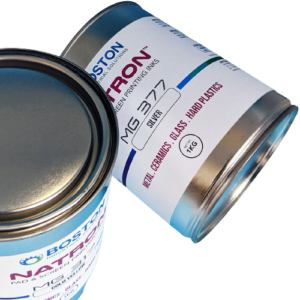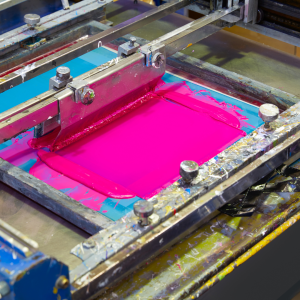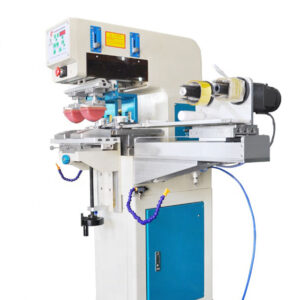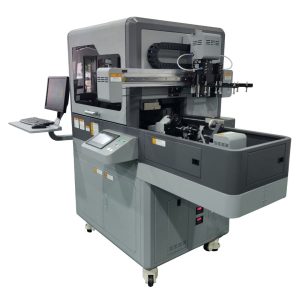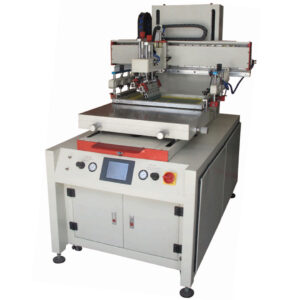Pad printing ABS plastic
Pad printing, also known as tampography. It is a printing process commonly used to transfer designs or logos onto ABS plastic and other materials. This technique involves using a silicone rubber pad to transfer plastic pad printing ink from a plate to the ABS plastic.
Applications of ABS
ABS plastic is commonly used in many applications all over the world. This material is known for its strength, durability, and resistance to impact and chemicals. Additionally, this material is also easy to print. For these and many other reasons, this plastic material has a wide range of applications. Industries that use ABS plastic include automotive, electronic, power tools, toy industries, etc. Some typical applications of this plastic type are: LEGO bricks, kitchen appliances, keyboards, helmets, medical devices, etc.
Advantages of Pad Printing
One of the main advantages of pad printing on ABS plastic is that it allows for printing on complex or irregularly shaped surfaces. The silicone pad conforms to the shape of the surface. As a result, this allows for precise and accurate transfers of the design or logo. Pad printing is also prints on small and intricate parts.
Pad printing on ABS plastic provides for great ink control. This is made feasible because of the pad printing ink cup. As a result, the pad printing ink cup utilizes a tiny amount of ink and regulates the amount of ink transmitted to the ABS plastic from the plate. This allows for precise and accurate prints with minimal ink waste.
How to pad print ABS plastic
Let us review the steps involved in pad printing on ABS plastic. Below are five simple steps for pad printing on plastics in general.
Step 1: Surface Preparation
The first step in pad printing on plastic is to ensure that the surface is clean and free of any contaminants. Use a clean, dry cloth or by using a mild cleaning solution to clean the substrate surface. It is important to remove any dust, oil, or grease from the surface. Debris and dirt will affect ink adhesion.
Step 2: Ink Selection
Select and use pad printing inks specifically formulated for the substrate. The Natron TP pad printing ink for plastic is the best ink for pad printing on ABS plastic. This pad printing plastic ink has high opacity, excellent adhesion, is very smooth, and has a high gloss. This ink prints as a one- or two-component ink. Additionally, we use fade-resistant pigments to formulate this ink. Lastly, all the colors within this series are inter-mixable to create new shades of color.
Step 3: Plating
Prepare the printing plate. The silicone pad will pick up the ink and transfer it to the ABS plastic. Steel, photo-polymer, or laser-etched plates are common printing plate materials. On the plate, a logo or other design is etched. Plastic pad printing ink coats the printing plate (cliché). Then a pad print cup that has an ink cup ring scrapes the excess ink from the plate.
Step 4: Pad Printing
The ABS plastic surface is then placed in the pad printing machine. Then print. During printing the silicone rubber pad presses onto the plate to pick up the image and transfer the ink film to the ABS plastic. The pad conforms to the shape of the surface, allowing for precise and accurate transfers of the design or logo. Adjusted the pressure and number of prints on the machine to achieve the desired opacity. With TP series pad printing ink, you only need one hit to achieve the desired opacity due to the high quality pigmentation.
You might also be interested in PP Primer for polypropylene
Step 5: Curing
After the printing process is complete, cure the printed part in a curing oven or leave it overnight to air dry and cure. At room temperature, the ink cures in 3 days. This step is important to ensure that the ink adheres properly to the ABS plastic surface and to improve its resistance to fading and discoloration.
Conclusion
In conclusion, pad printing is a versatile and efficient printing method. It is perfect for printing and marking ABS plastic parts and other materials. Its ability to print on complex and irregular shapes and its high degree of control over the amount of ink used make it a popular method for a wide range of applications. Additionally, ABS plastic’s strength, durability, and resistance to impact and chemicals make it an ideal material for many industries.
Learn more about Natron pad printing inks. Visit our YouTube channel to learn how to pad print.


